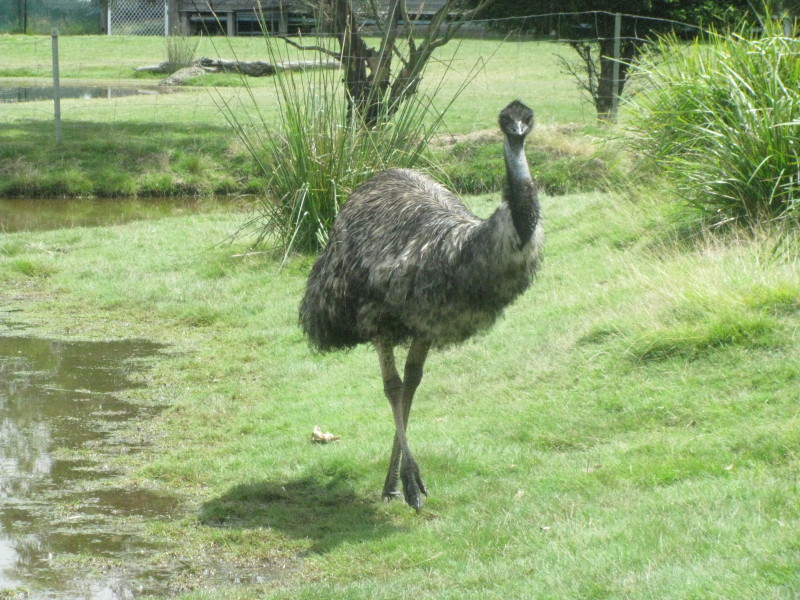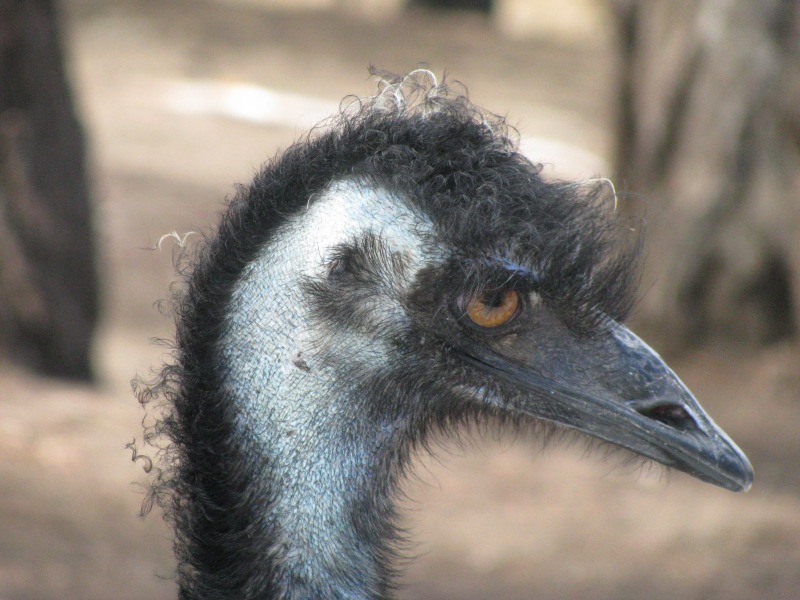Colours
Distinguishing features
Emus are large flightless birds. Females are usually larger than males by a small amount, but are substantially wider across the rump.
Emus have three toes on each foot in a tridactyl arrangement, which is an adaptation for running and is seen in other birds, such as bustards and quails.
They have small vestigial wings with a small claw at the tip. The Emu flaps its wings when it is running and it is believed that they stabilise the bird when it is moving.
They have a long neck and legs that enable them to run at high speeds, 48 km/h. The legs have no feathers and underneath the feet are thick, cushioned pads. Like the Southern Cassowary, the Emu has sharp claws on its toes which are its major defensive attribute.
They have a soft bill, adapted for grazing.
The neck of the Emu is pale blue and shows through its sparse feathers. They have brown to grey-brown body plumage of shaggy appearance; the shafts and the tips of the feathers are black. The plumage varies in colour due to environmental factors, giving the bird a natural camouflage. Feathers of Emus in more arid area with red soil have a similarly tinted plumage but are darker in animals residing in damp conditions.
The sexes are similar in appearance, although the male's penis can become visible when it defecates. (Wikipedia)
Size
- Up to 200 cm (Height)
Weight
- From 18 kg to 60 kg
Wingspan
- Wingspan data is not yet available.
Synonyms
Distribution
Distribution and habitat preferences
The Emu is common over most of mainland Australia, although it avoids heavily populated areas, dense forest, and arid areas. (Wikipedia)
Chronotypes
Diet
They eat a variety of native and introduced plant species; the type of plants eaten depends on seasonal availability. They also eat insects, including grasshoppers and crickets, lady birds, soldier and saltbush caterpillars, Bogong and cotton-boll moth larvae and ants. This forms a large part of its protein requirements and intake.
In Western Australia, food preferences have been observed in travelling Emus: they eat seeds from Acacia aneura until it rains, after which they eat fresh grass shoots and caterpillars; in winter they feed on the leaves and pods of Cassia; in spring, they feed on grasshoppers and the fruit of Santalum acuminatum: a sort of quandong.
Emus serve as an important agent for the dispersal of large viable seeds, which contributes to floral biodiversity. (Wikipedia)




